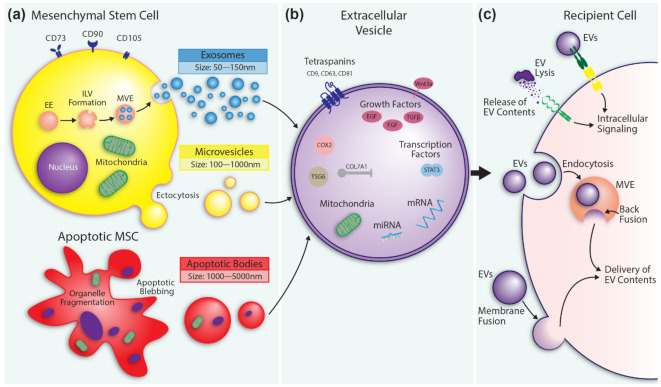Figure 1.
Mesenchymal stem cell (MSC) extracellular vesicle (EV) formation and messaging. (a) Exosome formation begins with membrane endocytosis of the early endosome (EE) to form intraluminal vesicles (ILV). ILVs are contained within a multivesicular endosome (MVE). Exosomes are released following fusion of the MVE with the plasma membrane. Microvesicles are released by ectocytosis and budding from the plasma membrane. Apoptotic bodies form from cells undergoing apoptosis and may contain fragmented organelles. (b) Depiction of select EV contents that contribute to wound healing. Additional EV contents are discussed in the main text and Table 1. (c) Released EVs interact with a recipient cell through membrane receptors thereby initiating intracellular signaling. EVs can also deliver their cargo to the recipient cell following endocytosis and back fusion within an MVE or by direct fusion with the plasma membrane. Lysis of EVs in the extracellular space releases contents that then act on the recipient cells.

